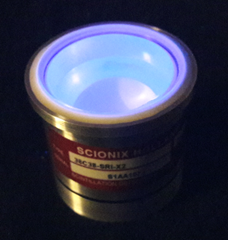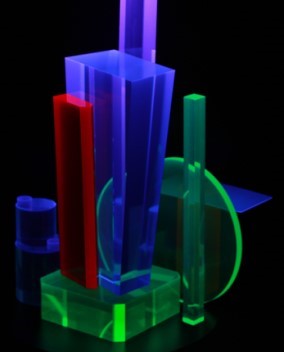March 12th, 2019 - What is an Organic Scintillator?
Learn more about Organic Scintillators, also known as plastic scintillators - the perfect scintillator for applications requiring large volume detectors.
Organic Scintillators (also called “plastic scintillators”) consist of a transparent host material (a plastic) doped with a scintillating organic molecule (e.g. POPOP : pbis [2(5phenyloxazolyl)] benzene). Radiation is absorbed by the host material, mostly via Compton effect because of the low density and Z value of organic materials. Therefore, plastic scintillators are mostly used for either detection of β and other particles or when very large volumes are needed since their material cost is relatively low.

Plastic scintillators are mainly used when large detector volumes are required e.g. in portal monitors/security or health physics applications. The cost of plastic scintillation detectors (per volume) is much lower than that of NaI(Tl) detectors, for example, and can be manufactured in several meter long slabs.

There is a large number of different organic scintillators each with specific properties. Organic scintillators can be doped with specific atoms like 6-Lithium or Boron to make them neutron sensitive or with Pb to improve the response at lower energies (tissue equivalent). This influences the scintillation properties. Also, plastic scintillators can be used to discriminate gammas from fast neutrons via pulse shape analysis which is used in physics research and in some security applications.
Learn more about our Scintillator Catalog here. Please feel free to contact Berkeley Nucleonics at (800) 234-7858 or info@berkeleynucleonics.com with any questions.
